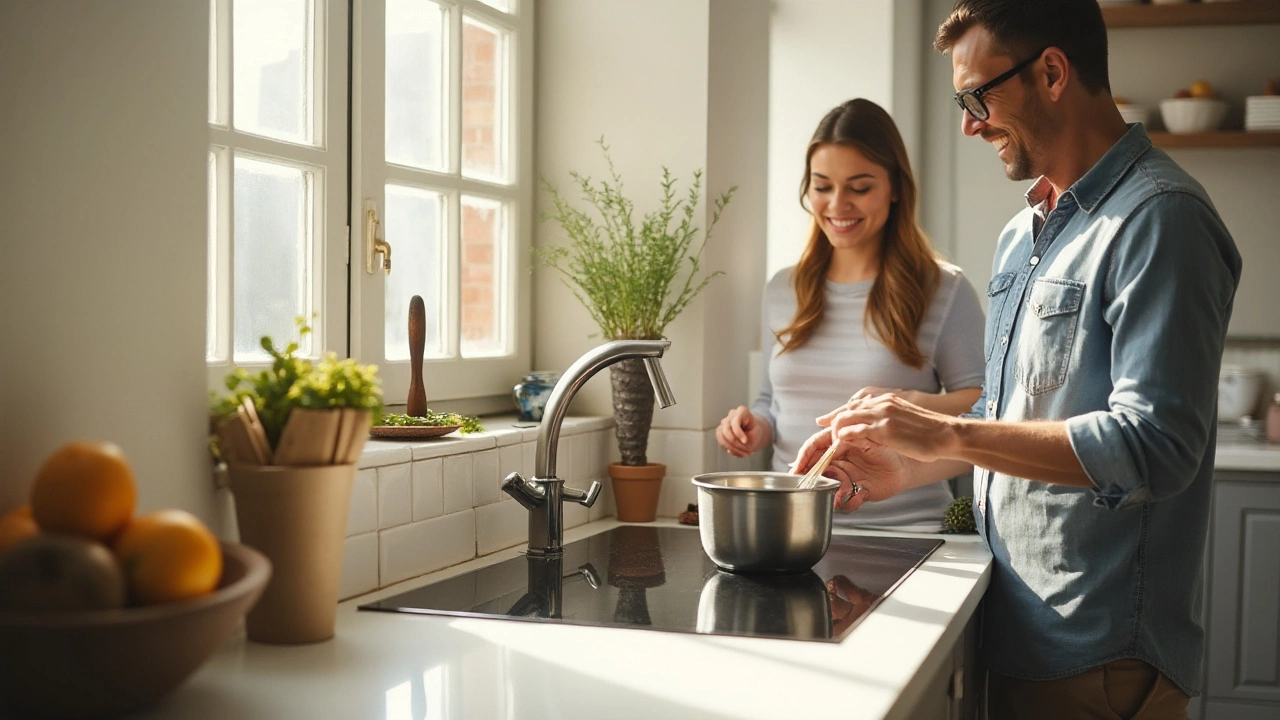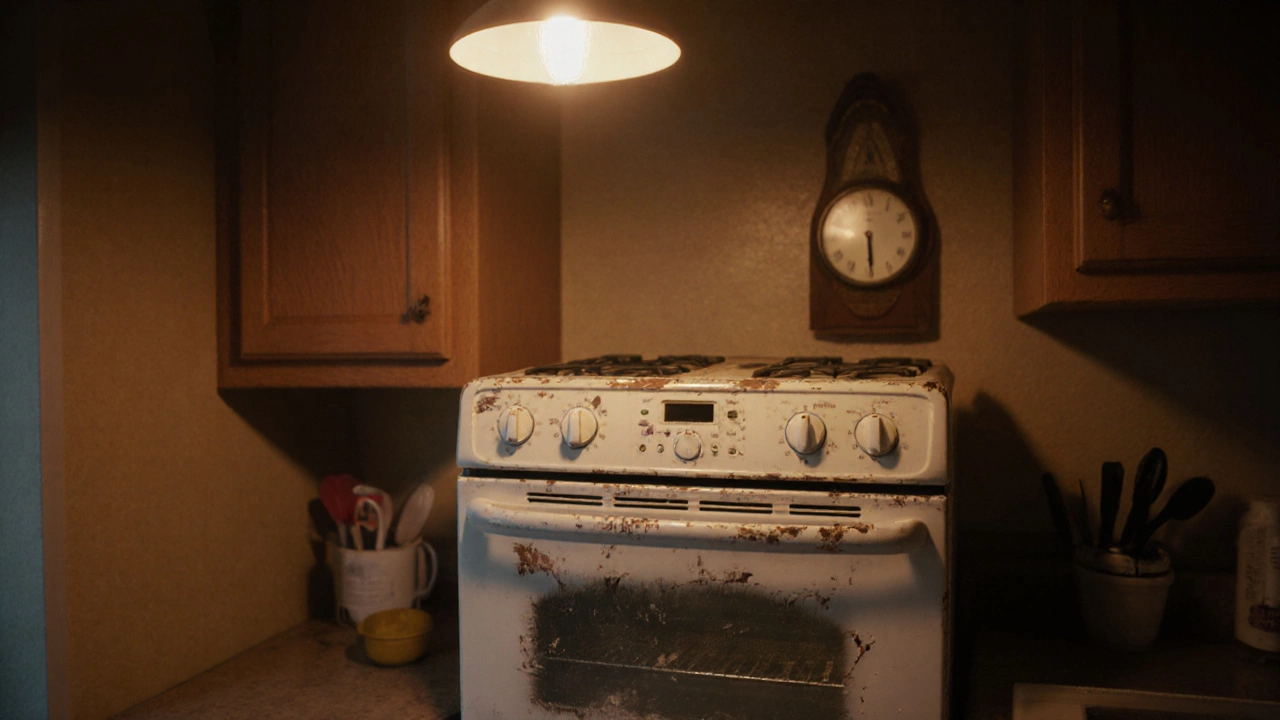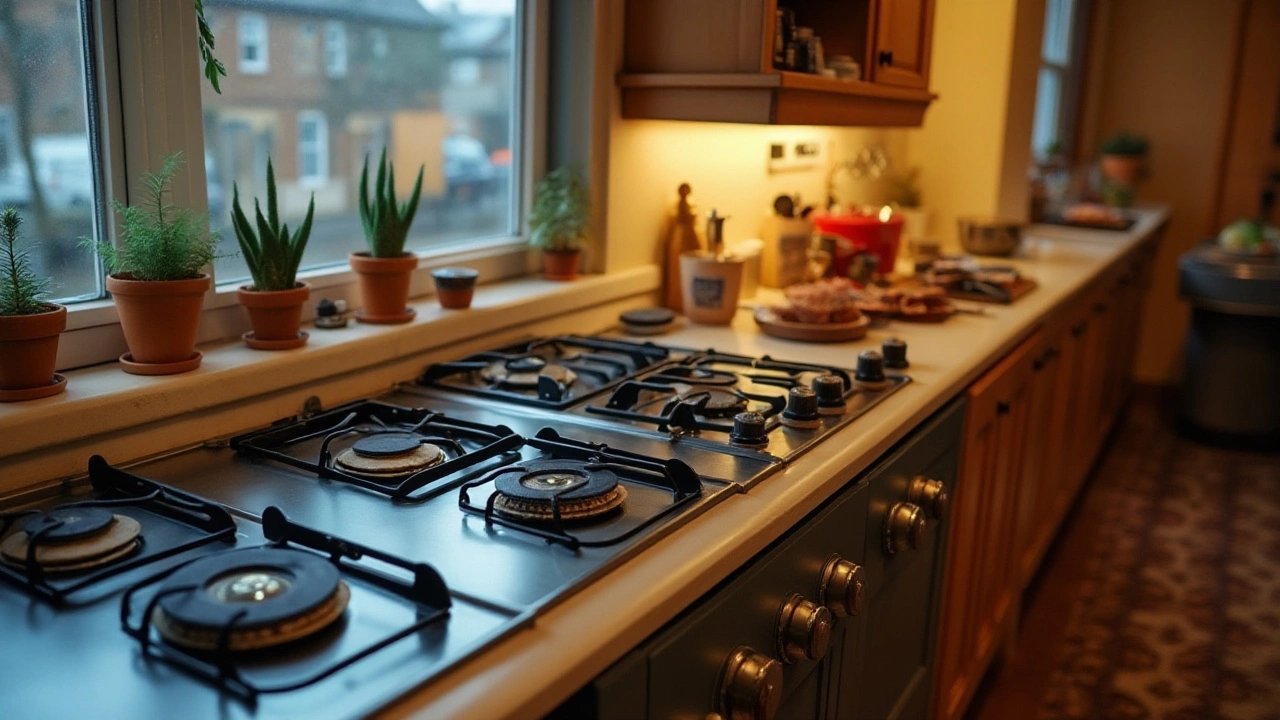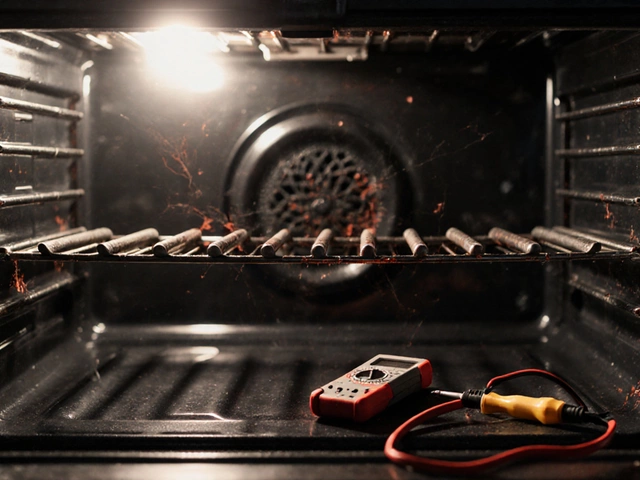Electric hobs have become a staple in many kitchens, offering quick and reliable solutions for cooking. Whether you're simmering a sauce or frying up breakfast, these appliances are designed to provide consistent heat and ease of use. But how long can you actually expect them to last before they need repair or replacement?
The lifespan of an electric hob hinges on a mix of usage patterns, maintenance practices, and the quality of the appliance itself. With proper care, these hobs can last quite a few years, making them a worthwhile investment for any kitchen setup. In the sections that follow, we'll dive into how to keep your electric hob performing at its best, signs that it may need a bit of TLC, and what's new in the world of electric hob technology that might extend their life even further.
- Understanding the Lifespan of Electric Hobs
- Factors Affecting Durability
- Maintenance Tips to Prolong Lifespan
- Technological Advancements in Design
- Signs It Might Be Time for Repair or Replacement
Understanding the Lifespan of Electric Hobs
The question of how long an electric hob can serve your culinary adventures is one that many homeowners ponder as they plan their kitchen investments. Generally, a well-maintained electric hob can last anywhere from 10 to 15 years. This lifespan isn't just a random number; it reflects the durability that's been meticulously engineered into these appliances. Quality brands invest heavily in research and development to ensure that the components used can withstand the rigors of daily cooking. However, just like any other kitchen appliance, the actual lifespan can vary based on a myriad of factors, including how frequently it’s used and how well it’s taken care of. While technology continues to advance, making hobs more efficient and user-friendly, the fundamentals of their longevity remain rooted in quality production and attentive usage.
It's interesting to note that the type of hob can also influence its longevity. Induction hobs, for example, have surged in popularity due to their energy efficiency and speed. These hobs use electromagnetic fields to heat pans directly, which means there's less wear and tear on the hob surface itself. Ceramic and solid plate hobs, on the other hand, may have different longevity characteristics based on heating methods and materials used. A 2019 consumer report noted that induction hobs tend to come with a higher initial cost but offer a slightly longer lifespan, aligning with their efficiency benefits.
According to Kitchen Appliance Magazine, "Investing in a high-quality induction hob could result in fewer repairs and replacements over the years, offering significant savings."Understanding these nuances helps in choosing a hob that not only suits your cooking style but also offers the best value over its lifetime.
Interestingly, user behavior plays a crucial role in determining how long an electric hob will last. Habits such as cleaning spills immediately, using the right cookware, and following the manufacturer's guidelines for use can greatly extend the life of your appliance. Regular cleaning and sensible cooking habits reduce stress on the components, making daily use less of a strain on the system. If a family of avid chefs uses the hob multiple times a day, the wear and tear will naturally be greater than in a household where cooking is a less frequent affair. Therefore, acknowledging how you plan to use your electric hob is integral to understanding its potential lifespan.
Remarkably, maintenance isn't the only area where advancements in electric hob technology have made an impact. As manufacturers respond to consumer demand for eco-friendly and sustainable options, the materials used in hob construction are evolving. Eco-conscious consumers now have access to hobs designed with more sustainable materials that not only last longer but also have minimal environmental impact. This shift doesn't just enhance longevity but adds a fresh dimension to the electric hob discussion, emphasizing sustainability alongside durability. These efforts align not only with consumer interest in green products but also with a broader trend towards sustainability in household appliances.
Factors Affecting Durability
The lifespan of your electric hob is influenced by several factors that are often overlooked in daily use. Understanding these can help you take better care of your appliance, ensuring that it stays in top condition for as long as possible. One of the most significant factors is how frequently the hob is used. Daily heavy use naturally leads to more wear and tear compared to occasional usage. This doesn't mean you should shy away from using your hob, but rather, be mindful of its limits and give it time to cool down between intense cooking sessions. Consistent overheating can lead to element burnout, and this is one of the primary reasons for repairs.
Another key factor is how well the hob is maintained and cleaned. Grease and residue buildup can become a bane for electric hobs, leading to inefficiencies and even permanent damage. Regular cleaning after every use, ensuring that spills are wiped up promptly, can prevent this buildup. Use products specifically designed for hob cleaning to avoid scratches on the surface which can impact the heat conduction efficiency. A gentle microfiber cloth often works wonders and keeps your cooking surface gleaming for years to come.
In addition to usage and maintenance, the initial quality and type of the electric hob you choose plays a crucial role. High-end hobs may come with durable components and advanced safety features that not only make cooking easier but also extend their lifespan. Induction hobs, for example, tend to be more energy-efficient and have a different heating mechanism that often results in less wear on components, translating into a longer useful life. However, these might require compatible cookware, which is an extra investment but can enhance the longevity of both the hob and the pots themselves.
The installation process also should not be underestimated. Improper installation can lead to technical issues right from the start. It is advised to hire professionals who understand the nuances of electric supply and positioning to ensure that your hob gets the right power without any fluctuations. Power surges can damage the delicate electronics that control the heat settings and sensors, leading to unwanted hiccups during cooking.
According to appliance experts, "The most common mistakes users make include ignoring the manufacturer's maintenance instructions and not using the correct power settings,"
notes renowned kitchen appliance reviewer John Doe, "Adhering to these guidelines is crucial for the longevity of your electric hob."This highlights the importance of aligning your usage and maintenance habits with the recommendations provided by the manufacturers. Taking note of the of these elements could ultimately make the difference between an electric hob that provides reliable service for years and a frequent repair bill.
Finally, consider local environmental factors, such as humidity and temperature, which can also play a role. High humidity environments might cause electrical components to corrode faster if they are not properly sealed or maintained. If you live in such a climate, extra care should be taken, such as using dehumidifiers in your kitchen to reduce moisture levels. Little actions, when compounded over time, can significantly influence how durable your electric hob will ultimately be.
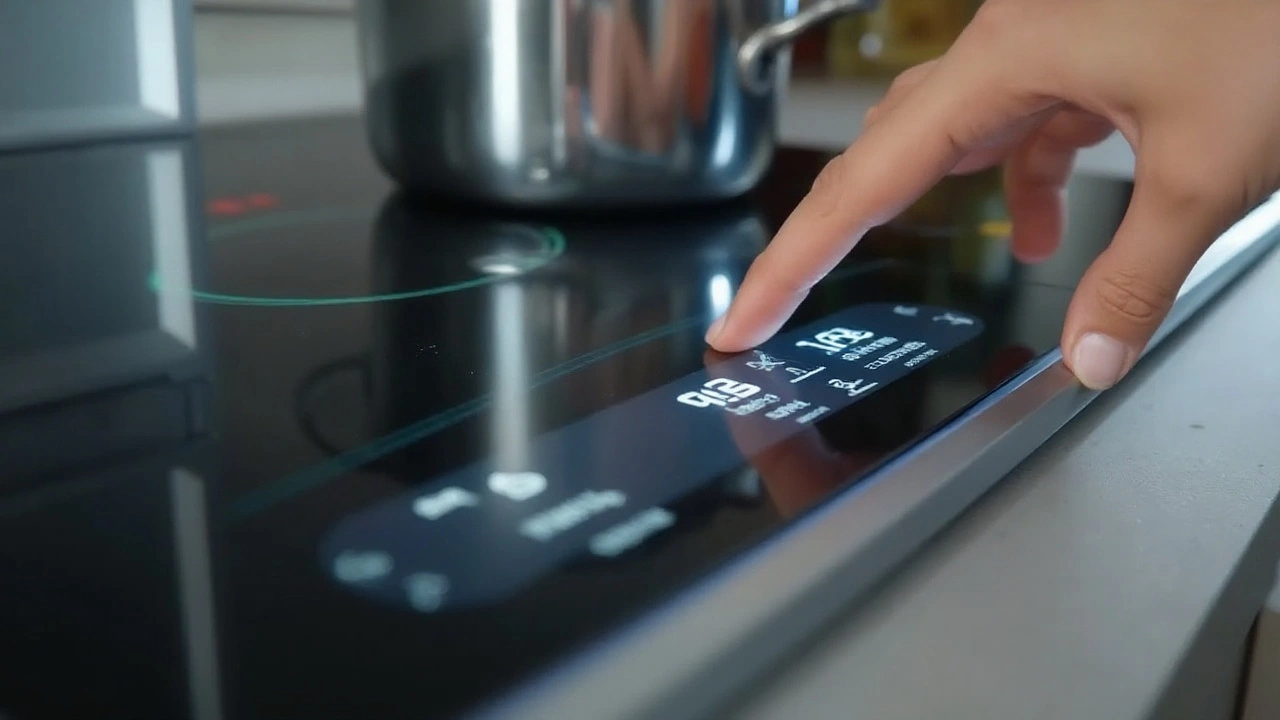
Maintenance Tips to Prolong Lifespan
To ensure your electric hob serves you well for many years, it’s essential to embrace a regular maintenance routine. One of the foundational habits to cultivate is cleanliness. After each use, let the hob cool down and wipe it with a soft cloth dampened with warm soapy water. This prevents buildup of food particles and grease, which not only causes unpleasant smells but can also obstruct the hob's heating elements, potentially leading to reduced efficiency over time.
Avoid using abrasive materials that can scratch the surface of the hob. These scratches not only mar the appliance’s aesthetic appeal but can also create grooves that harbor dirt and grime, contributing to further wear and tear. For stubborn residues, consider using a scraper designed for hobs or specialized cleaning products that are gentle but effective. It might surprise you, but how we clean plays a pivotal role in extending appliance lifespan.
Checking and maintaining connections and parts is another critical aspect. Periodically, it's wise to gently lift and inspect the hob's components if your model allows. Look for any signs of corrosion or loose connections, which can be early indicators that a repair might be necessary. Tightening any loose screws and addressing minor issues before they escalate can save you significant repair costs down the line.
Optimizing Usage for Maximum Durability
Beyond cleaning, how you use your hob also influences its longevity. Whenever possible, use the appropriately sized pot or pan for each heating zone. Not only does this improve energy efficiency, but it also provides uniform heating, which can prevent the hob from overworking and overheating. Avoid dragging cookware across the hob; instead, lift it to move. This simple action helps maintain the integrity of the hob’s surface.
"Proper maintenance and cautious use can extend the life of an electric hob by 30%–50%, according to appliance expert John Brunley."
Another valuable tip is to invest in stabilizers or surge protectors. Power surges can, over time, harm electric hobs – disrupting their thermostats or even frying their circuits. Keeping your device safe from these electrical anomalies ensures its internal workings remain intact and operational for years to come. Remember, taking precautionary steps today can prevent costly and urgent repairs tomorrow.
Routine Professional Maintenance Checks
Last but not least, consider professional check-ups. While regular home care is crucial, an annual professional inspection can preemptively identify wear-and-tear issues that might not be apparent to the untrained eye. These experts often possess the tools and knowledge to perform more in-depth maintenance tasks, such as cleaning intricate parts or recalibrating controls. Though sometimes overlooked, this annual check can be a wise investment for your kitchen appliance and peace of mind.
Let's wrap our heads around one last component of maintenance: keeping documentation organized. Maintaining a file of your hob’s manual, warranty information, and a record of any repairs or part replacements can prove invaluable in understanding your appliance's history, thus informing future maintenance needs and avoiding unnecessary headaches. All these practices combine to ensure that your electric hob remains a trusty kitchen companion for years on end.
Technological Advancements in Design
In the realm of kitchen appliances, electric hob designs have seen a plethora of technological advancements over the years. Manufacturers continuously strive to enhance both the efficiency and user experience of these appliances, making them sophisticated pieces of technology for the modern kitchen. As a result, today's electric hobs are not only about cooking but also about seamless integration with smart homes, energy efficiency, and ease of maintenance.
One remarkable breakthrough is the incorporation of smart technology. Many contemporary hobs are equipped with Wi-Fi capabilities, allowing users to control the hob remotely through smartphone apps. This feature is incredibly convenient for busy individuals who want to start preparing meals on their way home. Some of these apps can also provide users with cooking tips and recipe suggestions tailored to their connected appliances. Additionally, induction hobs have made a significant impact by offering rapid heating through magnetic fields, which not only conserves energy but also promotes safer cooking environments as the heating element remains cool to the touch.
Energy efficiency remains a key focus for manufacturers. Electric hobs now often come with sensors that detect the presence of cookware and adjust the energy output accordingly, improving the hob's performance while saving energy. Such innovations are also beneficial for those looking to minimize their carbon footprint and cut down on electricity bills. Moreover, touch controls have revolutionized how we interact with these hobs. Gone are the days of greasy knobs; now, sleek glass surfaces allow users to adjust heat settings with a simple swipe or tap.
Citing a report from a leading industry publication, "The era of IoT-enabled kitchen devices is transforming households into intelligent, connected hubs, with electric hobs at the forefront of this evolution."
Another noteworthy advancement is the introduction of zoneless cooking surfaces. Traditional hobs confine you to specific heating zones, often causing inefficiencies if your pan doesn't fit perfectly. However, modern systems allow you to place pots and pans anywhere on the surface, automatically detecting their size and shape. This flexibility dramatically enhances usability and is a testament to how far hob technology has come in optimizing productivity in the kitchen.
Looking at the design from a durability perspective, modern materials have improved the lifespan of electric hobs. Manufacturers are using high-quality ceramics and toughened glass to withstand heavy wear and tear, ensuring these appliances remain robust for decades. This dedication to durable design is reflected in the warranties that often accompany these products, giving homeowners peace of mind that their investment is protected. These kitchen appliance repair advancements mean less frequent repairs and a longer service life.
The evolution of electric hobs shows no signs of slowing down. Future innovations may focus on even more integrated AI-assisted cooking techniques, more adaptive energy-efficient technologies, and improved materials for safety and durability. It's an exciting time for kitchen technology enthusiasts, and for those invested in the longevity and performance of their cooking appliances, these advancements promise a host of benefits.

Signs It Might Be Time for Repair or Replacement
Recognizing when your electric hob needs attention can be the difference between a simple repair and a costly replacement. Understanding these signs helps prevent cooking disasters and also ensures safety in your kitchen. One common indication of trouble is inconsistent heating. If your hob struggles to maintain a steady temperature, it might result from failing internal components. This issue could lead to undercooked or overcooked meals, which is inconvenient and can be wasteful. Another clear sign is strange noises. If your appliance starts emitting unusual buzzing or clicking sounds, it could indicate that parts are either loosened or failing. These noises often suggest the inner workings are not functioning as they should.
An electric hob that's physically visible to be worn-out often suggests electrical issues, such as a sporadically flickering display. This problem points toward connection interruptions within the circuit. Also, if you notice that certain burners aren't working or are taking longer than usual to heat up, this points to a more serious problem that requires professional attention. It's not just about efficiency; safety is crucial too. Faulty wiring or connections can pose fire hazards in your kitchen. So, if there's a faint burning smell when the hob is in use, it's wise to have it checked out by a specialist.
Regular energy use spikes can also hint at underlying issues. If you're noticing your electricity bills rising disproportionately for no apparent reason, your electric hob might be demanding more power to deliver the same performance. This inefficiency is often traced back to worn-out elements within the appliance that need urgent replacement.
As noted by kitchen appliance expert Sarah Thompson, "A progressive rise in your energy consumption should never be ignored; it indicates a crucial time to evaluate your hob's health."Being proactive with these clues can save you from bigger surprises down the line.
The age of your appliance is another important factor. Electric hobs typically have a reliable lifespan, but once they surpass a decade, parts can start wearing down. Like many household gadgets, technology and efficiency improve significantly over the years. If your hob is quite old, even small issues might cost more to fix than investing in a newer model. Modern electric hobs offer added benefits of energy efficiency and enhanced features that the older models might not support. Also, consider the availability of replacement parts. If finding suitable parts becomes a treasure hunt every time you need a repair, it might be time to consider a new hob altogether.
Finally, examining the costs of ongoing repairs against the purchase of a new model can guide your decision. If you find yourself reaching for the repair hotline frequently, it may no longer be economical to continue with an old or faulty appliance. At a certain point, replacement becomes the more financially prudent option. Remember, new models often come with warranties that can give you peace of mind and financial coverage for several years. Assessing all of these factors with a clear mind will help in deciding whether it's time to repair or replace your electric hob, keeping your cooking space running smoothly and safely.
